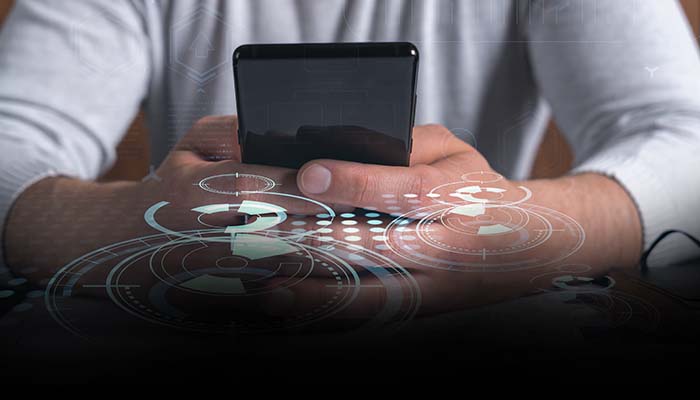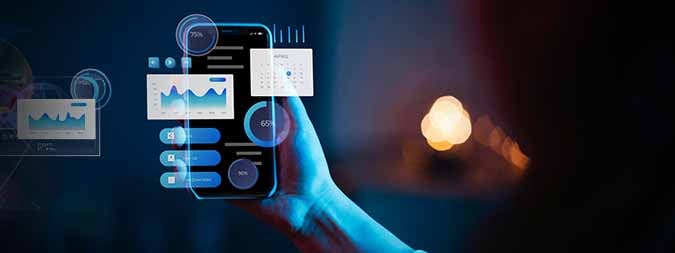What is Material Design?
Material Design is a design language developed by Google, expanding upon the “card” themes that debuted in Google Now. Material Design makes liberal use of grid-based layouts, responsive animations and transitions, padding, and depth effects such as lighting and shadows for superb digital experiences
Introduction:-
- The aim of developing Material Design is to create a visual interface for the user with an objective of making the app look materialistic.
- Using Material Design, the app gets a realistic look and feel.
- In Material Design, many new things were introduced such as material theme, new widgets, custom shadow, custom animations, etc.
- It gives you a layered theme in which the material components look separated, and make the UI components look separated as well.
- Material Design for a brilliant UI has become the design language for android. The best Android Material Design results in a modern UI and seamless digital experience.
- By utilizing the elements and principles of Material Design, we are able to create a framework that incorporates components and animations that provide more feedback to users.
Goals:-
- The main goal of developing Material Design is to create a visual interface for the user while making the app look intuitive and responsive
- It helps to create a single underlying system that allows for a unified experience across platforms and device sizes
- Mobile precepts are fundamental, but touch, voice, mouse, and keyboard are all first-class input methods
Principle Design Aspects for Developers:-
- 3D World:– The material environment is considered as a 3D space, which means all objects have x, y, and z coordinates. The z-axis is perpendicularly aligned to the plane of the display, with the positive z-axis extending towards the viewer.
- Light and shadow:– Within the material environment, virtual lights illuminate the scene. Key lights create directional shadows, while ambient light creates soft shadows from all angles.
- It helps you to give elevation for UI elements, which in turn helps the user to understand the relative importance of each element and focus their attention on the task at hand.
The Z value for a view has two components:
Elevation: The static component.
Translation: The dynamic component used for animations.
Z = elevation + translation
- Motion:– Just as the shape of an object indicates how it might behave, watching an object move demonstrates whether it is light, heavy, flexible, rigid, small or large. In the world of Material Design, motion describes spatial relationships, functionality, and intention with beauty and fluidity.
https://s-media-cache-ak0.pinimg.com/originals/ab/d5/fd/abd5fd192fb5b29c535844eb793f0377.gif
- Layered Interfaces
- Responsive Interaction:– Responsive interaction encourages deeper exploration of an app by creating timely, logical, and delightful screen reactions to user input. Each interaction is thoughtful, perhaps whimsical, but never distracting.
https://s-media-cache-ak0.pinimg.com/originals/d6/e4/8c/d6e48ca013f303cb083222dbcd20cc94.gif
Style:–
- Color:– Color in Material Design is inspired by bold hues juxtaposed with muted environments, deep shadows, and bright highlights. Material Design takes cues from contemporary architecture, road signs, pavement marking tape, and athletic courts. Color should be unexpected and vibrant.
https://www.google.com/design/spec/style/color.html#
- Themes:– Themes let you apply a consistent tone to an app. The theme specifies the darkness of the surfaces, level of shadow, and appropriate opacity of ink elements. To promote greater consistency between apps, light and dark themes are available to choose from.
- Icons:– Icons are the visual expression of a brand’s products, services, and tools. Simple, bold, and friendly, they communicate the core idea and intent of a product. While each product icon is visually distinct, all product icons for a given brand should be unified through concept and execution.
https://www.google.com/design/spec/style/icons.html#
How to Achieve Material Design: –
Google has released version 22 of the Android Support Library, which contains many of the API 21 components. These can be used down to API 7.
http://developer.android.com/tools/support-library/index.html
This includes Floating Action Buttons, RecyclerViews, SnackBars, Toolbars, CardViews (which are your one stop solution for elevation among all of your views as well as Coordinator Layouts (for the fancy collapsing ActionBars)
Material Design comes with a built in capacity to make an app look realistic and effective, which is a key to attract customers. It helps you to create beautiful UIs with the help of component separation usage. Thus, material design is considered as the UI language for Android.
Learn how we helped a client reduce their manual testing time by 90% with an automated testing app.
Download Case Study![]()



